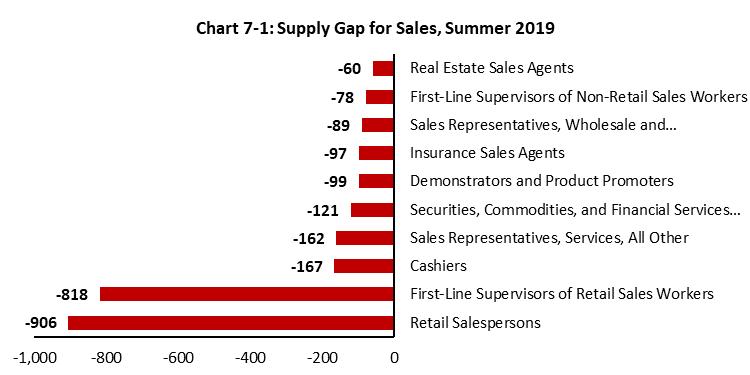
2 minute read
LONG-TERM EMPLOYMENT GROWTH BY OCCUPATION, 2018 TO 2026
LONG-TERM EMPLOYMENT GROWTH BY OCCUPATION, 2018 TO 2026
Beginning in 2018, the Bureau of Labor Statistics introduced a new methodology for producing occupation growth projections. The old method used for occupation estimations attempted to project occupational openings due economic growth, as well as replacement openings due to employees exiting the labor force. However, the estimations did not consider openings that occurred when employees moved from one occupation to another, and often resulted in an undercounting of total needed replacements. The new method is designed to provide better estimates by using demographic and other longitudinal data from Current Population Survey monthly data, and to account for openings that result as employees move from one occupation to another. Therefore, it is important to exercise caution when comparing projected occupational growth figures in this section and the next section to previous Workforce Now reports.
The forecast below provides additional information about expected annual occupational demands for the Southwest Florida region. Information is presented for the top 10 growth occupations along with the current hourly wage and educational requirements. The top 10 employment growth occupations are retail salespersons, landscaping and groundskeeping workers, registered nurses, food preparation and serving workers, waiters and waitresses, construction laborers, nursing assistants, carpenters, customer service representatives, and janitors and cleaners.
Table 8-1 provides the employment growth for the top 10 employment growth occupations, along with the current median wage and minimum educational requirement. The top 10 growth occupations primarily reflect expected increases in retail, tourism, food preparation, construction, and health care. Five of the top growth occupations require less than a high school degree, one requires a high school degree or GED, three require adult vocational training, and one requires an associate’s degree. Median wages varied from $9.63 per hour to $31.53 per hour and were highly correlated with the required minimum education.
A complete list of the top 50 long-term annual employment growth occupations in Southwest Florida can be found in the Appendix.
2018 to 2026
Retail Salespersons
Occupation 2018 2026 Growth Percent Growth Median Wage Minimum Education
24,406 26,740 2,334 9.6% $11.02 HS/GED
Landscaping and Groundskeeping Workers
13,850 16,001 2,151 15.5% $11.86 Less HS/GED Registered Nurses 10,661 12,805 2,144 20.1% $31.53 Associate’s Combined Food Preparation and Serving Workers, Including Fast Food 12,225 14,209 1,984 16.2% $9.70 Less HS/GED Waiters and Waitresses 17,733 19,290 1,557 8.8% $9.63 Less HS/GED Construction Laborers 9,783 11,275 1,492 15.3% $14.25 Less HS/GED Nursing Assistants 6,640 7,956 1,316 19.8% $13.40 PS Adult Voc Carpenters 8,017 9,197 1,180 14.7% $18.67 PS Adult Voc Customer Service Representatives 9,145 10,210 1,065 11.6% $13.72 PS Adult Voc Janitors and Cleaners, Except Maids and Housekeeping Cleaners 7,027 8,067 1,040 14.8% $11.44 Less HS/GED Source: Florida Department of Economic Opportunity, Employment Projections






